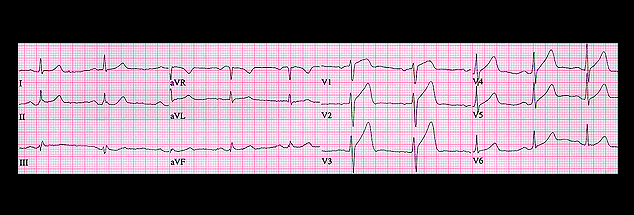
The ECG shown here is from a 52 year old female who presented to the emergency department of her rather small local hospital with dull chest and epigastric pain of 2 hours duration. Her blood pressure was 100/65 and her heart sounds were muffled. The remainder of the physical examination was unremarkable. The ECG reveals slight ST segment elevation in leads V2-V5 and slight peaking of the T waves in these leads. These changes are subtle, but in light of the history, are suggestive of the early "hyperacute changes" of an acute ischemic event involving the anterior wall. The ECG recorded the following day is shown on the next page.
